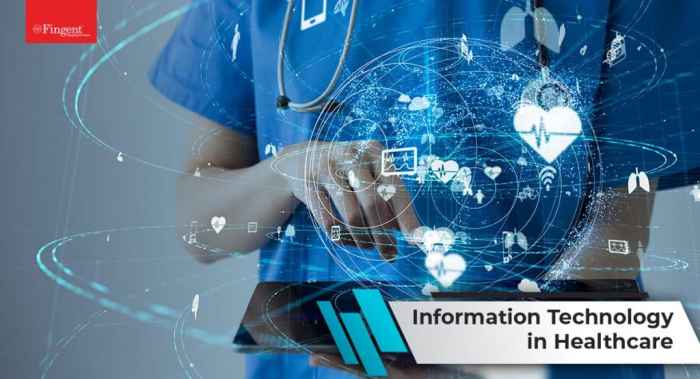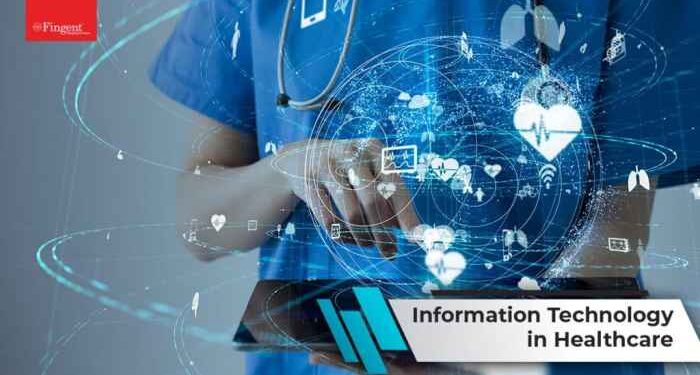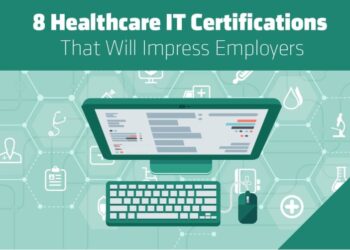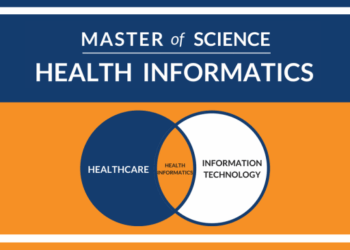Exploring the pivotal role of Health Information Technology in Hospitals, this introduction sets the stage for a captivating journey through the advancements and impact of technology in the healthcare sector.
As we delve deeper into the realm of health information technology, we uncover its profound influence on patient care, operational efficiency, data security, and the future trends that are reshaping hospital practices.
The Importance of Health Information Technology in Hospitals
Health Information Technology (HIT) plays a crucial role in transforming the healthcare industry by improving patient care, enhancing operational efficiency, and streamlining communication among healthcare providers.
Transforming Patient Care
- Electronic Health Records (EHR) allow healthcare providers to access patient information quickly and efficiently, leading to better-informed decisions and personalized treatment plans.
- Telemedicine and remote monitoring technologies enable patients to receive care from their homes, improving access to healthcare services and reducing hospital readmissions.
- Health information technology tools help in tracking patient progress, managing chronic conditions, and promoting preventive care, ultimately leading to improved patient outcomes.
Enhancing Operational Efficiency
- Electronic Health Records (EHR) streamline administrative tasks, such as billing and appointment scheduling, reducing paperwork and minimizing errors.
- Automated reminders and alerts in EHR systems help healthcare providers stay organized and ensure timely follow-ups with patients, improving overall efficiency in hospital operations.
- Data analytics tools in health information technology systems provide valuable insights for hospital management to optimize resource allocation, improve workflow, and enhance decision-making processes.
Streamlining Communication Among Healthcare Providers
- Health information technology facilitates secure messaging, allowing healthcare providers to communicate effectively and collaborate on patient care plans in real-time.
- Telehealth platforms enable multidisciplinary teams to consult and coordinate care remotely, leading to better patient outcomes and reducing treatment delays.
- Integration of health information technology systems across different healthcare settings promotes seamless information sharing, ensuring continuity of care and enhancing patient safety.
Implementation of Health Information Technology Systems
Implementing health information technology systems in hospitals is a complex process that involves various steps and considerations. It requires careful planning, coordination, and training to ensure successful integration and adoption by hospital staff.
The Process of Implementing Health Information Technology Systems
- Assessment of current systems and infrastructure to identify needs and gaps.
- Selection of suitable health information technology platforms based on hospital requirements.
- Customization and configuration of the chosen system to align with hospital workflows.
- Data migration from existing systems to the new health information technology platform.
- Testing and validation of the system to ensure functionality and accuracy.
- Training of hospital staff on how to use the new technology effectively.
- Ongoing support and maintenance to address any issues or updates.
Challenges Hospitals Face During Implementation
- Resistance to change from staff accustomed to traditional methods.
- Integration issues with existing systems leading to data discrepancies.
- Financial constraints for investing in new technology and training programs.
- Security concerns regarding patient data and privacy.
- Lack of standardized protocols and interoperability with other healthcare providers.
Successful Case Studies
One successful case study is the implementation of an electronic health record system at XYZ Hospital, which resulted in improved efficiency, reduced errors, and better patient outcomes. Another example is ABC Hospital, which implemented a telemedicine platform, allowing remote consultations and monitoring, leading to increased accessibility and quality of care.
Importance of Training and Education Programs
- Training programs ensure that hospital staff are proficient in using the new technology.
- Education on data security and privacy protocols helps prevent breaches and safeguard patient information.
- Ongoing learning opportunities enable staff to adapt to updates and new features of health information technology systems.
Data Security and Privacy in Health Information Technology
Maintaining data security and privacy in health information technology systems is crucial to protect sensitive patient information from unauthorized access or breaches
Any compromise in data security could lead to severe consequences for both patients and healthcare providers.
Measures to Ensure Confidentiality of Patient Information
- Hospitals implement strict access controls, ensuring that only authorized personnel can view or modify patient records.
- Encryption techniques are used to secure data both in transit and at rest, preventing unauthorized individuals from intercepting or accessing sensitive information.
- Regular security audits and risk assessments are conducted to identify vulnerabilities and address them promptly to enhance data protection.
Examples of Security Breaches in Health Information Technology
- In 2015, Anthem Inc., one of the largest health insurers in the U.S., experienced a massive data breach affecting nearly 80 million individuals. The breach exposed sensitive personal information, including names, addresses, and Social Security numbers.
- In 2017, the WannaCry ransomware attack targeted hospitals worldwide, disrupting healthcare services and compromising patient records due to outdated software and inadequate security measures.
Best Practices for Safeguarding Patient Data
- Ensure all staff members receive training on data security protocols and regularly update their knowledge to stay informed about the latest threats and prevention techniques.
- Implement multi-factor authentication to add an extra layer of security when accessing electronic health records, reducing the risk of unauthorized access.
- Establish a data breach response plan to effectively handle security incidents, including notifying affected individuals, regulatory bodies, and taking necessary steps to mitigate the impact.
Future Trends in Health Information Technology for Hospitals
Health information technology is rapidly evolving, and hospitals are at the forefront of embracing new technologies to improve patient care and operational efficiency. Let's explore some of the emerging trends that are shaping the future of health information technology in hospitals.
Role of Artificial Intelligence and Machine Learning
Artificial intelligence (AI) and machine learning are revolutionizing healthcare delivery by analyzing vast amounts of data to identify patterns and trends that can help in diagnosis, treatment, and personalized care plans. AI-powered systems can assist healthcare providers in making faster and more accurate decisions, ultimately leading to improved patient outcomes.
Telemedicine and Remote Monitoring
Telemedicine and remote monitoring technologies are becoming increasingly popular in hospital settings, allowing patients to receive care from the comfort of their homes. This trend is particularly beneficial for patients in remote areas or those with chronic conditions who require regular monitoring.
By leveraging telemedicine and remote monitoring, hospitals can enhance patient access to healthcare services and reduce unnecessary hospital visits.
Evolution of Health Information Technology
As technology continues to advance, we can expect health information technology to evolve further in the coming years. Predictive analytics, wearable devices, and interoperable systems are just a few examples of how health information technology will continue to impact hospitals.
By harnessing these innovations, hospitals can streamline processes, improve patient outcomes, and stay ahead in an increasingly digital healthcare landscape.
Closing Notes

In conclusion, the discussion on The Role of Health Information Technology in Hospitals encapsulates the transformative power of technology in enhancing healthcare services, ensuring patient confidentiality, and paving the way for a more efficient and patient-centered approach to medical care.
FAQ Resource
How has health information technology transformed the healthcare industry?
Health information technology has revolutionized healthcare by improving patient care, streamlining operations, and enhancing communication among healthcare providers.
What are the challenges hospitals face when implementing new health information technology systems?
Hospitals may encounter challenges such as staff training, system integration, and ensuring data security during the implementation of new technology systems.
Why is data security and privacy crucial in health information technology?
Maintaining data security and privacy is essential to protect patient information from breaches and safeguard confidentiality in electronic health records.
How are emerging technologies like artificial intelligence impacting healthcare delivery?
Artificial intelligence is revolutionizing healthcare delivery by enhancing diagnostics, treatment planning, and personalized patient care through innovative technological solutions.









